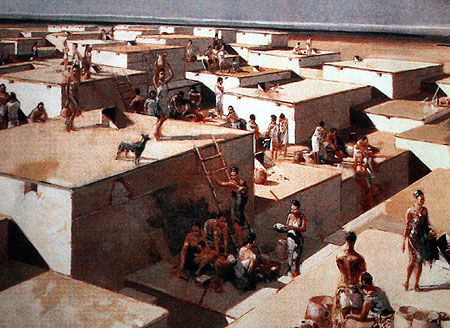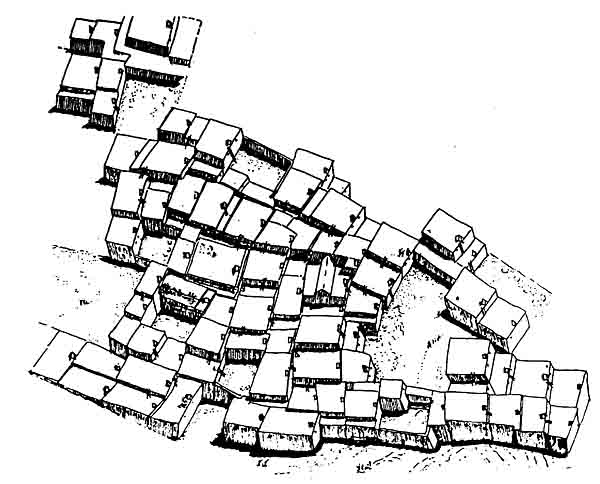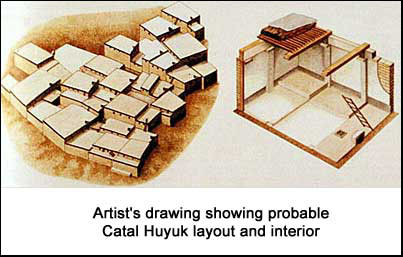Catal Huyuk is located in central Anatolia and because of its position it was in the center of metal trade. It had a population of around 3,000 and the area dates back to 7400 B.C.E. The city is made up of rectangular flat-roofed houses packed together into a single architectural mass with no streets or passageways.

The inhabitants moved across rooftops and descended into their homes through the roofs by ladder. The walls were made up of mud bricks and reinforced by massive oak post. In the case that a family member died they would be laid out till nothing remained but bones, which they used in the shrine and they would be buried in the sacred room of the shrine.If the family died out, the house remained abandoned for a period of time and then reoccupied.
A typical residence consisted of one large room connected to smaller storage rooms. The main room contained benches, ovens, and bins. The average size was 5 by 6 metersand the walls were plastered and decorated and each house had its own shrine, no central or communal sacred place was existent.



Great information included into your posting here and I love your imagery.
ReplyDeleteMake sure you remember citations though. otherwise, great job!